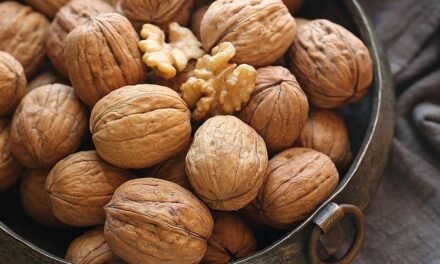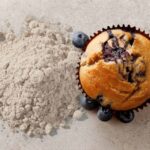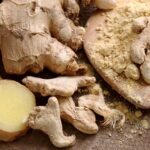Nowadays Indian consumers are more aware of their food. Hence, manufacturers should focus on the fortification of bakery products with novel bioactive and functional substances, suggest Deepak Mudgil and Sheweta Barak.
Fortification of Bakery Products
The bakery industry in India occupies an important place due to the taste and nutritional value of the bakery products. Baked products are foods manufactured from recipes largely based on or containing significant quantities of wheat or other cereal flours which are blended with other ingredients, are formed into distinctive shapes and undergo a heat-processing step that involves the removal of moisture in an oven located in a bakery. Bakery products include bread, biscuits, pastries, cakes, buns, rusks etc.
The bakery manufacturers in India can be differentiated into the two major groups of bread & biscuits. The bakery business in India can also be categorised into two sectors i.e. organised and unorganised sector. Annual production of bakery products is about three million tonnes out of which organized sector contribute about 1.3 million tonnes and the remaining 1.7 million tonnes is contributed by unorganized sector comprising of small-scale local manufacturers. The unorganized sector accounts for about half of the total biscuit production. It also accounts for 85 percent of the total bread production and around 90 percent of the other bakery products such as pastries, cakes, buns, rusks and others. It shows the domination of unorganized sector over organized sector.
The reasons for this trend include low cost, traditional taste and availability of local bakery products in market in ample amount. Due to these reasons unorganized sector covers the 60% of the bakery market. Organized sector which covers about 40 % of bakery market have scope as well as potential to increase its share. Organized sector should, therefore, opt some traditional as well as innovative techniques some of which are currently in practice and some are to be explored.

Nowadays Indian consumers are more aware of their food. Hence, manufacturers should focus on the fortification of bakery products with novel bioactive and functional substances apart from basic nutrition. Another concern of bakery products manufacturers should be about the taste of fortified bakery products. The new recipes and technologies should be developed in such a way that a negligible change in taste of bakery products could be found after the fortification with functional ingredients. Research and development should also be done in bakery ingredients and additives so that they can mask the undesirable colour and flavour of the functional ingredients used in fortification.
Status of Urban Nutrition in India
The Indian bakery industry consists of some of the large food categories such as breads, biscuits, cakes etc. The branded packaged products of the Indian bakery business registered a business of Rs. 17000 crore in the last financial year. Indian bakery industry is showing an annual growth rate of 9.8 per cent. In the biscuits segment, the major players include Britannia, Parle, ITC, and Cadburys which comprise of about 75 per cent of the market. Unlike biscuits segment, the breads and cakes market is much more fragmented with multiple regional and local players. The annual per capita consumption of bakery products in India is around two kg, which is comparatively much lower than the developed countries where consumption is between 10 and 100 kg per annum.

The tremendous growth in the bakery industry has been observed recently due to three reasons. Firstly, due to the availability of better ingredients such as chocolate, toppings, fillings, flavours etc. Secondly, education is playing a very important role which leads to skilled and educated professionals striving to produce bakery products of international standards. Thirdly, adulteration in traditional sweets during festive seasons as well as in routine practice leads to steer the interest of consumers towards bakery products. The increasing number of shops and stalls of both packaged and unpackaged bakery products can now be seen in festive seasons.
Fortification of bakery products refers to the addition of certain bioactive or functional ingredients to the bakery product to enhance its nutritional and therapeutic value. Encouraging trends in consumption of bakery products by the population of lower and middle-income groups indicate vast scope for consideration of micronutrient enrichment of bakery products. Fortification of bakery products is essential due to its easy reach to a specific target group. Bakery products can be centrally processed which is useful from a production point of view. The low-cost technology of premix addition is relatively easy and ensures an even distribution within batches. Bakery products are used relatively soon after production, thus having better vitamin retention and lesser sensory changes due to the need for only a small overage.
Functional ingredients for in fortification of bakery products
Functional ingredients or fortificants used in various bakery products include mineral (iron, calcium, zinc, boron, copper, chromium), vitamins (vitamin A, vitamin B, vitamin C, vitamin D, vitamin E, riboflavin, pantothenic acid, folic acid, vitamin B6& B12), Omega-3 fatty acids such as DHA, proteins, soluble dietary fibers (Beta-glucans, pectin, gums etc.), insoluble dietary fibers (wheat brans, apple fiber and other vegetable fibers), Oryzanol (from rice bran oil) etc.
All these fortificants perform a specific therapeutic function in the human body after consumption. Nutrients like Vitamin C and A enhance dietary iron absorption. Zinc, Vitamin D, boron & Cu help in maintaining bone health. Vitamin A, vitamin E, vitamin B6, vitamin C and Zn help in functioning of immune cells particularly T helper cell and thus, strengthen the immune system. Iron, zinc, vitamin E, vitamin C, vitamin B and Omega-3 fatty acids Like DHA help in cognitive functions such as synaptic transmission, membrane fluidity and signal-transduction, protect membranes from lipid peroxidation and affect synaptic plasticity. Vitamin B6, vitamin B12 and folic acid reduce homocysteine levels and thus improve cardiovascular health.
Chromium, zinc, vitamin C and vitamin E help in regulation of insulin action as chromium and zinc are required for the synthesis of chromodulin, a molecule that also potentiates the action of insulin. Antioxidant vitamins C and E diminish protein glycoxidations and thus regulates the insulin action. Dietary fiber both soluble as well as insoluble from different sources performs three main functions: it improves cardiovascular activity, improves digestive system functioning and controls diabetes via reducing the absorption of glucose in the intestine.
Protein fortification of bakery products is now in common practice to improve the essential amino acid profile of bakery products via supplementation or fortification with protein sources such soya protein isolates, whey protein isolates etc. Besides all the above fortificants, multigrain and whole-grain flour utilization is also in common practice as it provides the better protein quality (essential amino acid profile) and dietary fiber in bakery products.
Innovation and challenges in fortification of bakery products
Every innovation or development faces some sort of challenges in their application. There are two types of challenges that are being faced by manufacturers in fortification of bakery products. challenges with respect to products and challenges with respect to fortificant or bioactive or functional ingredients. Challenges with respect to products include interference during processing and product acceptability. Challenges with respect to fortificants include processing losses, nutrients interaction and bioavailability of fortificants.
Interference during processing includes different particle size and bulk density of ingredients which leads to segregation. The solubility of fortificant (water/fat) also requires some specific medium like fat-soluble nutrient as vitamin D requires fat or hydrocolloid medium for proper dispersibility. Several fortificants like calcium pose rising challenges in bread and muffins by disrupting the bubble formation stage. Incorporating fortificants may also lead to alteration in taste, texture, shelf life and thus overall product acceptability.
Processing losses of fortificants during baking of bakery products is also an important challenge. Minerals fortification in bakery products is not a problem as minerals are relatively stable to heat treatments. Unlike minerals, vitamin degradation and losses occur during baking operation as vitamins are heat-labile. To minimize or prevent all these processing losses, innovative techniques should be developed. The new techniques or methods should also be explored to improve the stability of functional ingredients used in the fortification of bakery products. Lastly, the cost-effective processing operations as well as functional ingredients should be developed so that the ultimate fortified bakery product should have taste, acceptability, and bioavailability of functional ingredients at lower cost.

















